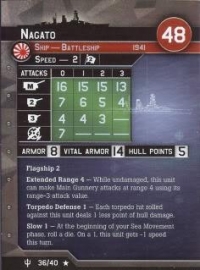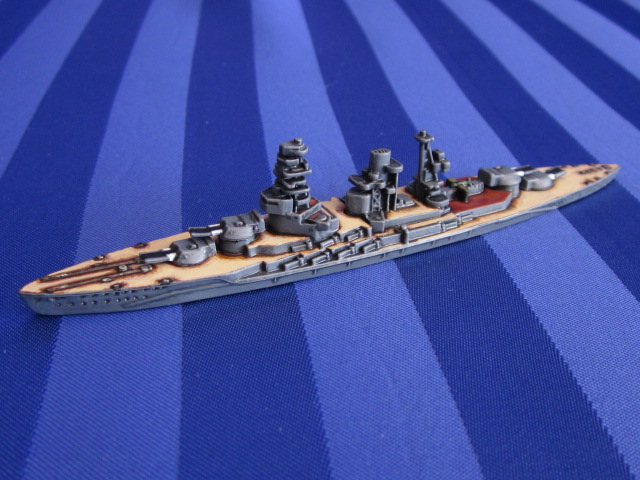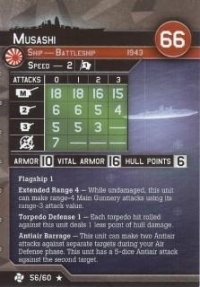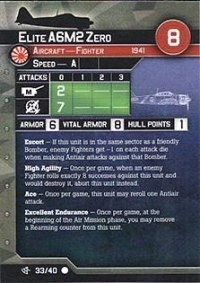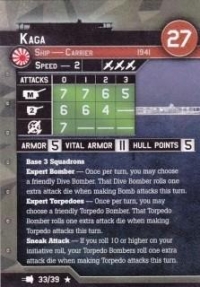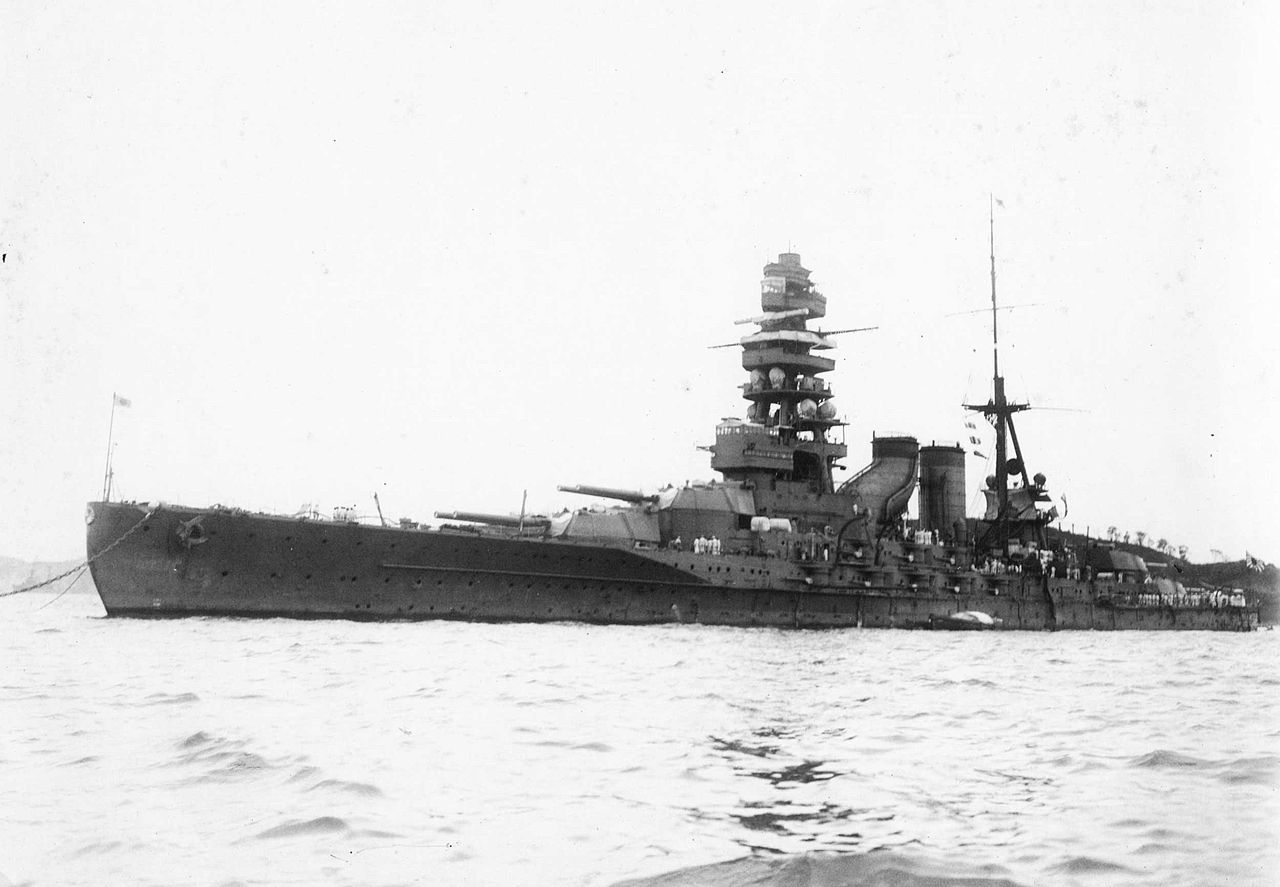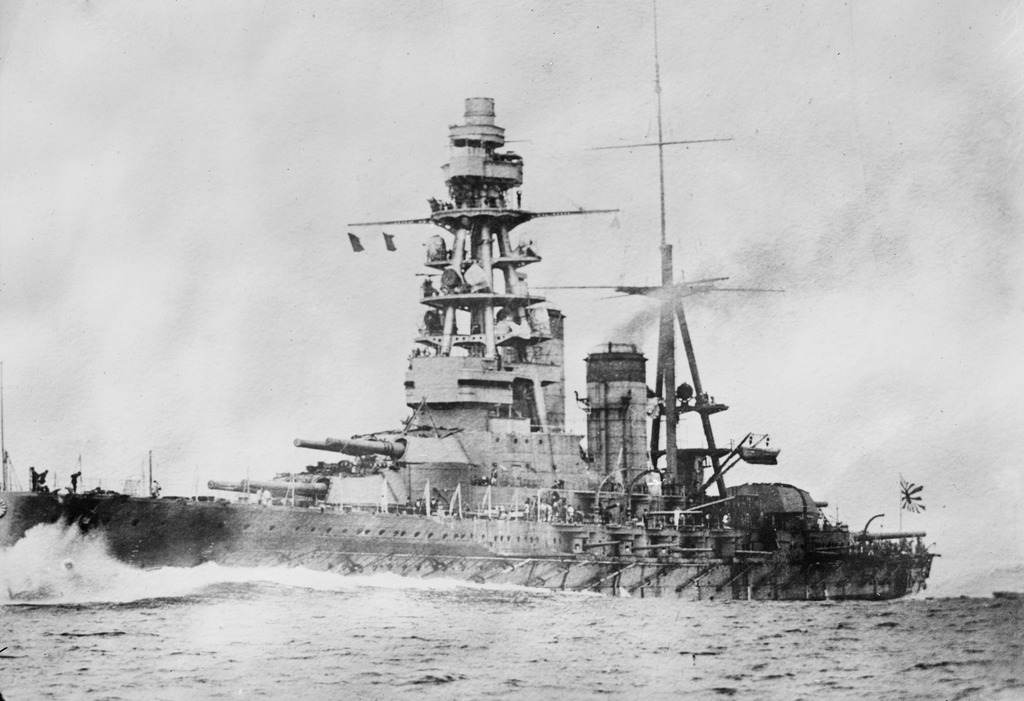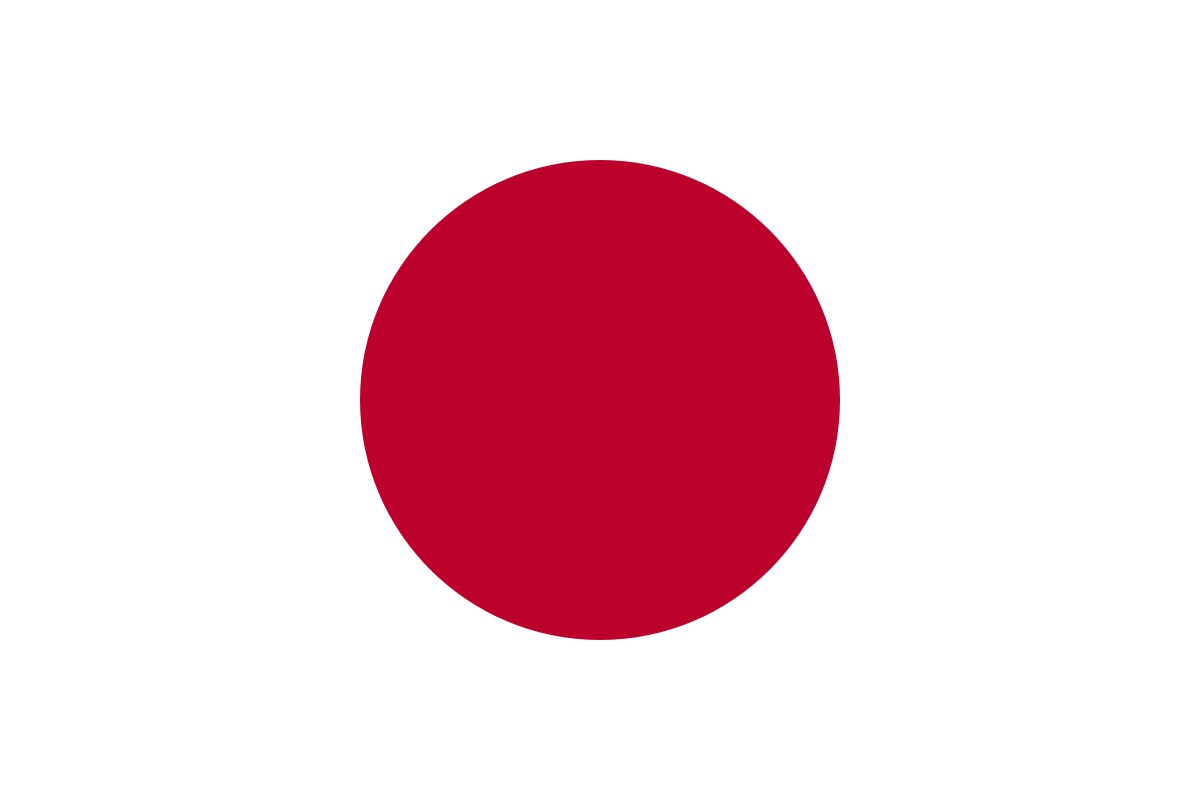Prototype: Nagato (長門), named for Nagato Province, was a super-dreadnought battleship built for the Imperial Japanese Navy (IJN). Completed in 1920 as the lead ship of her class, she carried supplies for the survivors of the Great Kantō earthquake in 1923. The ship was modernized in 1934–1936 with improvements to her armor and machinery and a rebuilt superstructure in the pagoda mast style. Nagato briefly participated in the Second Sino-Japanese War in 1937 and was the flagship of Admiral Isoroku Yamamoto during the attack on Pearl Harbor. She covered the withdrawal of the attacking ships and did not participate in the attack itself.
Other than participating in the Battle of Midway in June 1942, where she did not see combat, the ship spent most of the first two years of the Pacific War training in home waters. She was transferred to Truk in mid-1943, but did not see any combat until the Battle of the Philippine Sea in mid-1944 when she was attacked by American aircraft. Nagato did not fire her main armament against enemy vessels until the Battle of Leyte Gulf in October. She was lightly damaged during the battle and returned to Japan the following month. The IJN was running out of fuel by this time and decided not to fully repair her. Nagato was converted into a floating anti-aircraft platform and assigned to coastal defense duties. She was attacked in July 1945 as part of the American campaign to destroy the IJN's last remaining capital ships, but was only slightly damaged and went on to be the only Japanese battleship to have survived World War II. In mid-1946, the ship was a target for nuclear weapon tests during Operation Crossroads. She survived the first test with little damage, but was sunk by the second.
Other than participating in the Battle of Midway in June 1942, where she did not see combat, the ship spent most of the first two years of the Pacific War training in home waters. She was transferred to Truk in mid-1943, but did not see any combat until the Battle of the Philippine Sea in mid-1944 when she was attacked by American aircraft. Nagato did not fire her main armament against enemy vessels until the Battle of Leyte Gulf in October. She was lightly damaged during the battle and returned to Japan the following month. The IJN was running out of fuel by this time and decided not to fully repair her. Nagato was converted into a floating anti-aircraft platform and assigned to coastal defense duties. She was attacked in July 1945 as part of the American campaign to destroy the IJN's last remaining capital ships, but was only slightly damaged and went on to be the only Japanese battleship to have survived World War II. In mid-1946, the ship was a target for nuclear weapon tests during Operation Crossroads. She survived the first test with little damage, but was sunk by the second.
Class History: The Nagato-class battleships were a pair of dreadnought battleships built for the Imperial Japanese Navy (IJN) during World War I, although they were not completed until after the end of the war. Nagato, the lead ship of the class, frequently served as a flagship. Both ships carried supplies for the survivors of the Great Kantō earthquake in 1923. They were modernized in 1933–36 with improvements to their armor and machinery and a rebuilt superstructure in the pagoda mast style. Nagato and her sister ship Mutsu briefly participated in the Second Sino-Japanese War in 1937 and Nagato was the flagship of Admiral Isoroku Yamamoto during the attack on Pearl Harbor on 7 December 1941 that began the Pacific War.
The sisters participated in the Battle of Midway in June 1942, although they did not see any combat. Mutsu saw more active service than her sister because she was not a flagship and participated in the Battle of the Eastern Solomons in August before returning to Japan in early 1943. One of Mutsu’s aft magazines detonated in June, killing 1,121 crew and visitors and destroying the ship. The IJN conducted a perfunctory investigation into the cause of her loss and concluded that it was the work of a disgruntled crewmember. They dispersed the survivors in an attempt to conceal the sinking to keep up morale in Japan. Much of the wreck was salvaged after the war and many artifacts and relics are on display in Japan.
Nagato spent most of the first two years of the war training in home waters. She was transferred to Truk in mid-1943, but did not see any combat until the Battle of the Philippine Sea in mid-1944 when she was attacked by American aircraft. Nagato did not fire her main armament against enemy vessels until the Battle of Leyte Gulf in October 1944. She was lightly damaged during the battle and returned to Japan the following month for repairs. The IJN was running out of fuel by this time and decided not to fully repair her. Nagato was converted into a floating anti-aircraft platform and assigned to coastal defense duties. After the war, the ship was a target for U.S. nuclear weapon tests during Operation Crossroads in mid-1946. She survived the first test with little damage, but was sunk by the second test.
The sisters participated in the Battle of Midway in June 1942, although they did not see any combat. Mutsu saw more active service than her sister because she was not a flagship and participated in the Battle of the Eastern Solomons in August before returning to Japan in early 1943. One of Mutsu’s aft magazines detonated in June, killing 1,121 crew and visitors and destroying the ship. The IJN conducted a perfunctory investigation into the cause of her loss and concluded that it was the work of a disgruntled crewmember. They dispersed the survivors in an attempt to conceal the sinking to keep up morale in Japan. Much of the wreck was salvaged after the war and many artifacts and relics are on display in Japan.
Nagato spent most of the first two years of the war training in home waters. She was transferred to Truk in mid-1943, but did not see any combat until the Battle of the Philippine Sea in mid-1944 when she was attacked by American aircraft. Nagato did not fire her main armament against enemy vessels until the Battle of Leyte Gulf in October 1944. She was lightly damaged during the battle and returned to Japan the following month for repairs. The IJN was running out of fuel by this time and decided not to fully repair her. Nagato was converted into a floating anti-aircraft platform and assigned to coastal defense duties. After the war, the ship was a target for U.S. nuclear weapon tests during Operation Crossroads in mid-1946. She survived the first test with little damage, but was sunk by the second test.
Country: Japan is an island nation in the Pacific Ocean with dense cities, imperial palaces, mountainous national parks and thousands of shrines and temples. Shinkansen bullet trains connect the main islands of Kyushu (with Okinawa's subtropical beaches), Honshu (home to Tokyo and Hiroshima’s atomic-bomb memorial) and Hokkaido (famous for skiing). Tokyo, the capital, is known for skyscrapers, shopping and pop culture.
Although legend has it that Japan was founded in 660BC, archaeologists agree that settlement in the Japanese archpelago dates back as far as 100,000 years. The Jomon Period (8000-c.300BC) is the earliest that has been studied. It is named after the 'jomon' or cord-marked pattern style of pottery of the period.
Although legend has it that Japan was founded in 660BC, archaeologists agree that settlement in the Japanese archpelago dates back as far as 100,000 years. The Jomon Period (8000-c.300BC) is the earliest that has been studied. It is named after the 'jomon' or cord-marked pattern style of pottery of the period.
Item created by: Lethe on 2015-05-31 17:46:30. Last edited by gdm on 2019-09-17 19:07:16
If you see errors or missing data in this entry, please feel free to log in and edit it. Anyone with a Gmail account can log in instantly.
If you see errors or missing data in this entry, please feel free to log in and edit it. Anyone with a Gmail account can log in instantly.


